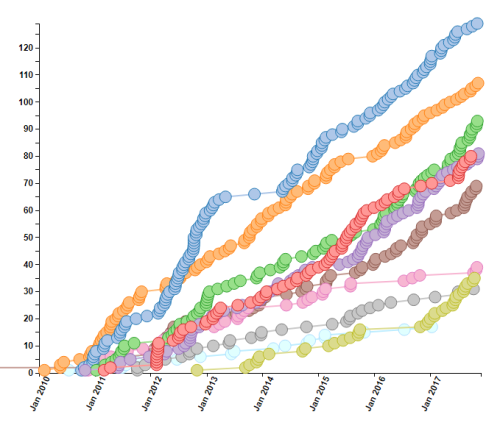
Big data: analysis of CMS papers. See Rao’s article for an interactive version (Courtesy: Achintya Rao/CMS)
By Hamish Johnston
CERN’s CMS collaboration has passed a milestone of sorts at the end of October – it published its 700th research paper. And physicists working on the giant detector on the Large Hadron Collider haven’t stopped there as the tally is now 712 and rising.
CERN’s Achintya Rao has delved into the CMS archives and has chosen his top seven papers. These include the first-ever paper about the detector, which was published in 2008 and, embarrassingly, gets the weight of the detector wrong. Rao has also put together an interactive infographic that looks at 680 papers that analyse data collected by CMS.
CMS generates vast amounts of data, which are stored and processed worldwide. The data-centre consultants Comtec have put together a nice piece about “Extreme data centres” that explores how data can be stored in strange and often hostile environments. Data acquired by the IceCube experiment at the South Pole are stored in a data centre that, unlike most others, has to be heated rather than cooled. The piece also has some innovative ideas about cooling data centres such as locating them underwater – as Google has done.
If all goes well tomorrow, the self-taught rocket builder Mike Hughes will blast off in an attempt to prove that the Earth is flat – at least according to an article in The Washington Post. Hughes, who describes the idea that the Earth is a sphere as a Masonic conspiracy, plans to rise about 550 m above the ground where he hopes to gather evidence of Earth’s flatness. Good luck Mike.
Guidelines
Show/hide formatting guidelines
this text was deletedwhere people live in harmony with nature and animals</q>
Some text